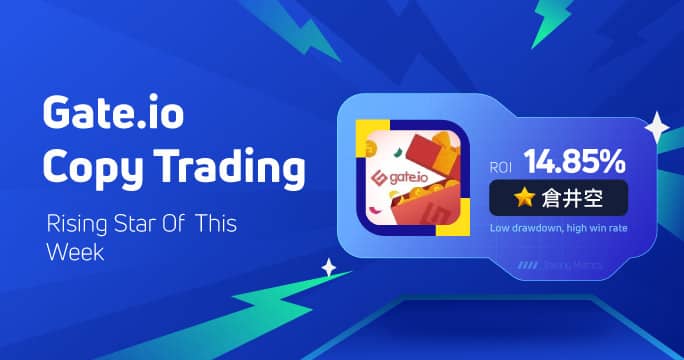Foreword
The year 2023 was a significant year for the Bitcoin ecosystem as it moved to a new peak, and the end of the year saw a renaissance of the ecosystem’s dormant presence against a backdrop of huge challenges in both digital assets and traditional markets. While the explosion of inscriptions has been met with some disapproval, it is undeniable that the market’s enthusiasm has also brought about a return to the “builder culture” of Bitcoin, a momentum that has fuelled a wave of Bitcoin innovations, most notably in the form of a narrative about the market’s enthusiasm for inscriptions that has been passed on to other public chains. This article explores the current direction of the Bitcoin ecosystem and provides an overview of the current Bitcoin ecosystem without any investment advice.
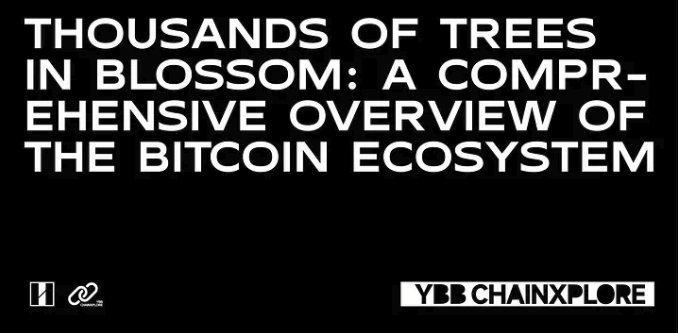
BTC market hot protocols
The Bitcoin Asset Offering Protocol experienced rapid growth in Q1 2023, and after a year to Q4 the market is showing a boom. Particularly in the Ordinals protocol ecosystem, a variety of tokens represented by BRC20 triggered a noticeable wealth effect, fuelling FOMO sentiment in the market, even though it was only a JSON script file added to the Bitcoin blockchain, it still received an upward push from the market. As time evolved, more high-profile protocols emerged, including Ordinals, Atomicals, Taproot Assets, Runes, and PIPE, a trend that clearly demonstrates that the Bitcoin ecosystem is moving toward greater diversity and innovation, with asset issuance protocols offering the market a wider range of options and richer opportunities for growth. The Bitcoin ecosystem is moving in the direction of greater diversity and innovation.
Ordinals protocol (BRC-20)
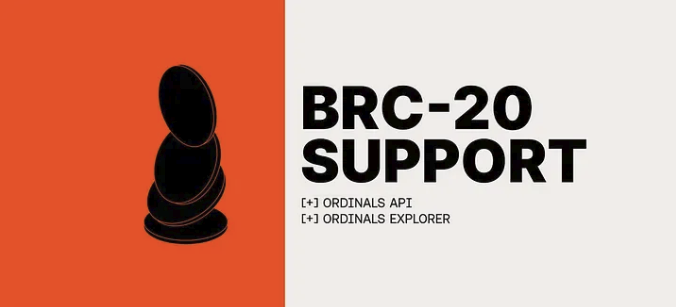
In January 2023, Bitcoin developer Casey Rodarmor released the Ordinals protocol, a Bitcoin-based asset issuance protocol with two core components: the Ordinals ordinal theory and Inscription Inscription.Casey, the author of the Ordinals protocol, carries the content on the UTXO by means of Inscription The ordinals assign unique identifiers to Bitcoin’s smallest unit, the 2,100 trillion Satoshi. Inscription, on the other hand, is the process of associating the content with the Unspent Transaction Output (UTXO). the asset issuance process of the Ordinals protocol is akin to writing the information to witness data and documenting the writing of the token information in JSON format using the BRC20 form.
BRC-20 Tokens
BRC-20 is an experimental Bitcoin token standard created by Domo on 8 March 2023, with the core concept of leveraging JSON data from Ordinal Inscriptions. With the BRC-20 standard, users are able to easily implement key features such as Token contract creation (Deploy), Token minting (Mint), and Token transfer (Transfer). As of 18 December 2023, statistics show that the BRC-20 track has reached a total market capitalisation of $640 million, underscoring the importance of this cryptocurrency standard in the Bitcoin ecosystem and opening up new possibilities for the development of digital assets.
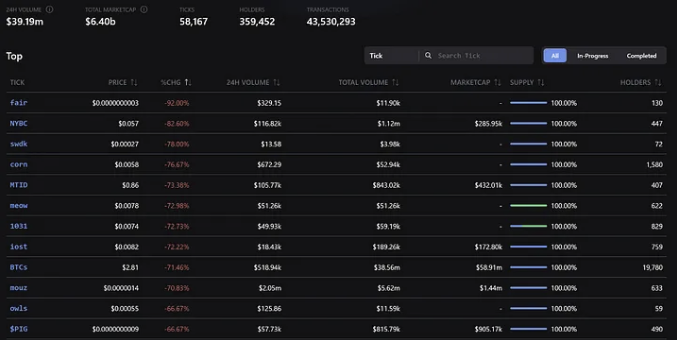
BRC-100
BRC-100 is a Bitcoin DeFi protocol built based on Ordinals. In addition to its own token properties, BRC-100 is also an application protocol, and developers can also design DeFi and other application-based products based on the BRC-100 protocol. According to developer MikaelBTC, BRC-100 introduces protocol inheritance, application nesting, state machine models, and decentralised governance, bringing computational power to the Bitcoin blockchain and making it possible to build AMM DEX, lending, and other Bitcoin-native decentralised applications.
Ordinals NFT
Software engineer Casey Rodarmor launched the Ordinals NFT protocol on the Bitcoin blockchain, which is now live. Users can now create and own their own NFTs on Satoshi (Sat), the smallest unit of Bitcoin, which use a random but logical ordering system that makes each Satoshi unique. Ordinals NFTs are described as having three main differences compared to ethereum NFTs:
- The relevant data is stored in the Bitcoin network and does not rely on external storage such as IPFS, AWS S3, etc;
- Permissionless: Transactions can be completed in a decentralised manner via PSBT without the need for “authorisation”;
- The cost of minting is proportional to the volume of transactions.
BRC-420
According to RCSV’s official Gitbook, BRC-420 focuses on modularising on-chain inscriptions, and contains two key components: a meta-universe standard and a royalty standard, which define an open and flexible format for assets in the meta-universe, and a specific on-chain protocol for the creator economy, respectively. Unlike Ordinals’ other protocols, which are single-inscription, the BRC-420 protocol uses a recursive combination of multiple inscriptions.
Atomicals protocol (ARC-20)

Atomicals, also known as the Atomic Protocol, covers a variety of asset types including homogenised tokens ARC20 Standard, NFT, Realm, and Collection Containers.As a blockchain asset issuance protocol based on the UTXO type, Atomicals offers two minting methods, decentralised minting and direct minting. The decentralised minting method introduces Bitwork Mining, a minting method based on the PoW (Proof of Work) model. The protocol uses Satoshi, the smallest unit of Bitcoin, as the smallest unit of the issued asset, with a current minimum detachable unit of 546 ATOMs and a minimum of 546 ATOMs that can be sold or transferred.
The Atomicals protocol differs from Ordinals in the ordering of asset transactions in that it does not rely on a third-party sequencer and can be used to create (mint), transfer, and upgrade a variety of digital items, including native NFTs, games, digital identities, domain names, and social networks. Additionally, the protocol supports the creation of fungible tokens with the token name ATOM (which differs from Cosmos’ ATOM only in name).
Recently, founder Arthur shared his thoughts on Meta-Protocols in an interview on 13 December. He sees Meta-Protocols as a new approach that allows developers to create their own data structures and rules without being limited to using strict structures that already exist. Protocols that represent meta-protocols, such as Atomicals Protocol, continue to emerge, offering developers the opportunity to create entirely new structures using smart contracts. This trend has allowed creators to pour their efforts into the Atomicals Virtual Machine (AVM) in a more focused manner. The launch of this virtual machine has enabled developers to build smart contract programmes on the Bitcoin network, providing them with a way to create experiences like never before. This means that creators can focus more intently on implementing smart contracts in the Bitcoin ecosystem, driving digital innovation forward.
Atomicals Asset Type:
- ARC20: is a token format standard similar to BRC20 on Ordinals;
- Realm: a new concept proposed by Atomicals that aims to disrupt traditional domain names and will be used as a prefix;
- Collection Containers: this is a data type used to define NFT Collections, primarily for storing readable NFTs and associated metadata. According to the data on 20 December, TOOTHY, which is currently in the first place in terms of market capitalisation volume, has a total market capitalisation of 46.12 BTC and a 7-day trading volume of 25.74 BTC.
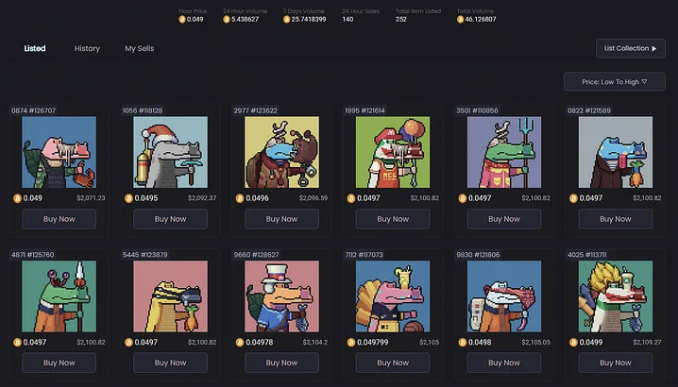
ARC-20 AVM
In an interview on 13 December Atomicals founder Arthur said that meta-protocols are a new way for developers to create their own data structures and rules without being constrained by existing strict structures. Meta-protocols such as the Atomicals Protocol continue to emerge, enabling developers to create entirely new structures using smart contracts. This allows creators to focus on the Atomicals Virtual Machine (AVM), which enables developers to build smart contract programs on the Bitcoin network.
Runes Protocol (runes)
Runes was proposed by Casey Rodarmor, the creator of the Ordinals protocol, to solve the efficiency problems that existed with BRC-20. Unlike the complexity of some protocols, Runes’ design is simple and elegant. By using OP_RETURN in a transaction, Runes prompts the allocation of tokens to a specific UTXO with an output index, token count, and token ID.
The Runes protocol is a homogeneous token (Fungible Token) protocol based on the Bitcoin UTXO model that manages and transfers through simple tuples (ID, OUTPUT, AMOUNT) and OP_RETURN operations. Its main feature is the simplicity of the protocol, which optimises the use of on-chain data by supporting some of the operations without additional off-chain data or native tokens.
The Runes Protocol was proposed as a result of the dissatisfaction of Casey, the developer of the Ordinals Protocol, with BRC20’s use of the Ordinals Protocol to create a large number of UTXOs, so he proposed a homogenised token protocol based on the Bitcoin UTXO model. Currently, the Runes Protocol remains an idea of Casey’s and does not yet have a full client or development tools, although it is controversial in some areas.
PIPE protocol
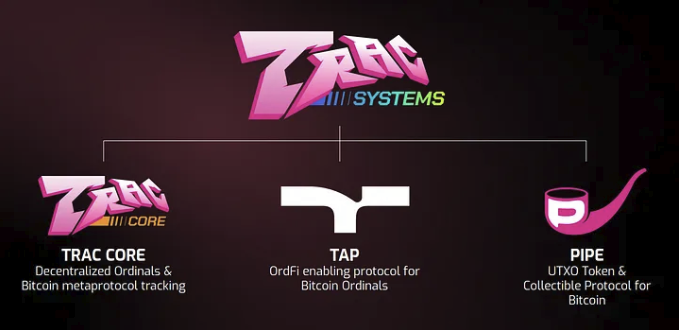
The PIPE protocol is an asset issuance protocol developed by developer Benny after being inspired by the Runes protocol designed by Casey and the Ordinals-based BRC-20 standard proposed by Domo.The PIPE protocol cleverly blends the features of the Runes protocol and the standards of these two protocols and introduces three protocols in the BTC ecosystem: Trac Core, Tap, and Pipe (TTP for short, collectively known as Trac Systems).
The main features of the PIPE protocol include Deploy, Mint, and Transfer, or DMT for short, which allow PIPE protocol assets to be easily created, distributed, and transferred within the Bitcoin network. In addition to supporting homogenised tokens, the PIPE protocol provides a complete data structure and standard for non-homogenised tokens.
- Trac Core:A prophetic machine and decentralised indexer for Bitcoin inscriptions;
- Tap:an extension to the Ordinals protocol rather than a fork, and therefore seamlessly compatible with BRC20;
- Pipe:a new protocol for the Ordinals fork, but the actual process requires recasting liquidity;
- Trac tokens: deployed in the Ordinals-BRC20 protocol, and later used as governance tokens for the Tap protocol;
- TAP tokens: deployed in the Ordinals-Tap protocol.
Stamps (SRC-20)
On 6 December, Bitcoin Core developer Luke Dashjr revealed on social media platforms that Inscriptions is exploiting a vulnerability in the Bitcoin Core client Bitcoin Core to send spam to the blockchain. The vulnerability allows users to set an additional data size limit on transactions when forwarding or mining, which Inscriptions bypassed by disguising its data as program code.Dashjr said the vulnerability would be fixed in next year’s v27 release. However, later on, in response to an Ordinals-related question, he claimed that the inscription itself did not exist and was a hoax.
This statement poured “cold water” on the Ordinals ecosystem, causing the price of BRC-20 tokens to fluctuate dramatically and the price of ORDI to drop by more than 25% in a single day. Dashjr’s critics argue that the Bitcoin network belongs to the community, and that the developers don’t have the right to decide the fate of the Ordinals protocol based on their personal preferences. Even if Dashjr completes an update to the Bitcoin programme, the entire Bitcoin network will not be able to complete the upgrade as long as miners do not adopt the updated programme.
While the controversy over inscriptions is not yet final, the fiasco has sparked reflection on Ordinals and the nature of the blockchain, as well as bringing attention to another token standard, SRC-20, along with the Bitcoin Stamps protocol, a derivative protocol that uses Bitcoin’s UTXO as a data-storage medium to store arbitrary data via Bitcoin’s OP_ RETURN function to store arbitrary data. This protocol results in larger Bitcoin blocks, posing a risk of centralisation and leading to higher costs of running the network. The Bitcoin Stamps protocol, on the other hand, was created by Mike In Space and is based on the Counterparty (XCP) protocol, which is the first NFT token protocol standard on the Bitcoin chain.Stamps encodes image data as Base64 strings and stores them in Bitcoin UTXO, which is more focused on the reliability of the data than Ordinals. data reliability and cannot be permanently removed from the Bitcoin public ledger.
The controversy has fuelled thinking about Ordinals and the nature of the blockchain, and has sparked interest in the SRC-20 standard and the Bitcoin Stamps protocol.SRC-20 is similar to BRC-20, but avoids the controversy associated with Ordinals.Bitcoin Stamps uses image data written directly to Bitcoin UTXO, with an emphasis on data reliability and the inability to be removed. emphasises the reliability of the data and the fact that it cannot be removed.
An extension of Turing completeness:
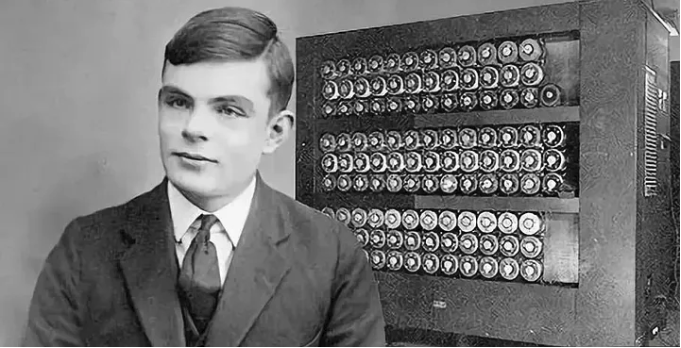
A Turing machine is an abstract model of computation proposed by Alan Turing in 1936 to define the concept of computability. Turing completeness is a concept related to the theory of computation that refers to whether a computing system is capable of simulating the computational process of any Turing machine, with the focus being that if a computing system is Turing-complete, then it has the ability to perform the computational process of any Turing machine. It is worth noting that the Bitcoin blockchain itself is not Turing-complete, and in the impossible triangle of the blockchain, the decentralised and secure nature of the blockchain is achieved by shedding scalability altogether. So this design choice helps prevent malicious code from being run on the Bitcoin network, thereby safeguarding the security and stability of the network.
BitVM
On 9 October, ZeroSync project leader Robin Linus published a whitepaper titled “BitVM: Compute Anything On Bitcoin,” which triggered thinking about improving the programmability of bitcoin, which stands for “Bitcoin Virtual Machine. BitVM stands for Bitcoin Virtual Machine. It proposes a Turing-complete solution for Bitcoin contracts that can be implemented without changing the consensus of the Bitcoin network, enabling any computable function to be verified on Bitcoin, and allowing developers to run complex contracts on Bitcoin without having to change the basic rules of Bitcoin.
BitVM is a new Optimistic Rollup + Fraudproof + Taproot Leaf + Bitcoin Script computing paradigm. It stands for “Bitcoin Virtual Machine”. It allows developers to simulate the behaviour of programs without applying any load or changes to the actual Bitcoin network. BitVM does this extension with its unique scheme, which consists of the following main roles:
● Provers and Verifiers: the former creates proofs using information entered into a system, and the latter verifies the computation of the proof without knowing the exact content of the information to ensure that the computation is accurate;
● Off-chain computation and on-chain proofs: without changing the Bitcoin consensus, BitVM will undoubtedly need to move a lot of computation and scaling off-chain to increase flexibility.
RGB
RGB is a member of the LNP/BP Standards Consortium (Lightning Network Protocol / Bitcoin Protocol), a non-profit organisation overseeing the development of the various layers of Bitcoin, covering the Bitcoin Protocol, the Lightning Network Protocol, and smart contracts such as RGB. The RGB protocols are suitable for use in a scalable and The RGB protocol is for scalable and private Bitcoin and Lightning Network smart contract systems, and is intended to be introduced into the Bitcoin ecosystem by running complex smart contracts on UTXO. The official description is: A scalable and confidential suite of smart contract protocols for Bitcoin and the Lightning Network that can be used to issue and transfer assets and rights more broadly.
Layer2 extension programme.
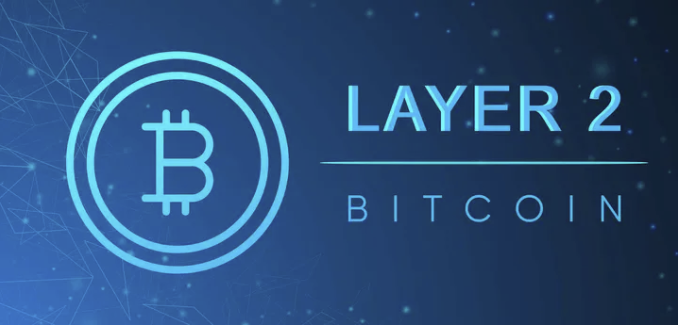
Stacks
Stacks is a smart contract-enabled Bitcoin Layer 2 designed to link itself to the Bitcoin chain through its unique “Proof of Transfer” consensus mechanism, Proof of Transfer (PoX), allowing for a high degree of decentralisation and scalability without adding additional environmental impact.Stacks is an open-source, two-layer Bitcoin blockchain bringing smart contracts and decentralised applications to Bitcoin. Originally named Blockstack, the groundwork for Stacks began in 2013.Stacks’ technical architecture consists of a core layer and a subnet, with developers and users able to choose between the two, with the difference being that the mainnet is highly decentralised but has low throughput, while the subnets are less decentralised but have higher throughput.The Nakamoto update performed by Stacks will improve network performance across the board and introduces an important product — SBTC.
- Stacks has updated a version called Nakamoto, which will allow Stacks to not only settle bitcoin transactions, but also upgrade to 100% bitcoin recombination resistance and improve the speed of the stack, allowing for a block out time estimate of 5 seconds;
- SBTC introduces decentralised and native anchoring as a way to increase the Total Value Locked (TVL) and user base of the Stacks network, through the issuance of SBTC-based stablecoins.
Lightning Network
Lightning Network is a Layer 2 extension solution to the Bitcoin network designed to address the scalability and transaction speed of the Bitcoin network. It is a smart contract-based payment protocol that allows participants to make fast, low-cost payments of tiny amounts without having to record every transaction on the Bitcoin blockchain.
In the Lightning Network, participants can open a multi-signature payment channel, which allows for nearly instantaneous payments by transacting directly within the channel and avoids the need to make every transaction on the Bitcoin main chain. Actual settlement with the Bitcoin main chain only occurs when the channel is opened and closed. This allows the Lightning Network to greatly increase the processing power of the Bitcoin network, reduce transaction fees, and accelerate transaction confirmations.
The Lightning Network uses a delivery method similar to that used in the network to pass payments from one node to another through multiple payment channels, resulting in a payment network that covers the entire network. This design allows participants to make payments across nodes and channels via links, resulting in a high degree of interconnectivity. Its core features include:
- Issuance of Stablecoins: Leveraging Bitcoin’s own value to provide users with stablecoins in a borderless financial world, as in the ability to use it to create a new stablecoin, taUSD, and to transfer BTC and taUSD into the Lightning Network channel using a single Bitcoin transaction to perform DeFi operations;
- Multiple Universe Modes: Universes are repositories that hold all the information needed to initialise a Taproot Asset wallet and synchronise the state of a particular Taproot Asset;
- Asset Issuance and Redemption API: Users can trade all types of assets on Bitcoin as easily as investing in stocks and bonds in the real world, mapping to the issuance of real-world assets;
- Asynchronous Receiving Functionality: Providing developers with tools to add Uniform Resource Identifiers (URIs) to addresses on the chain;
- Scalability: new feature build-loadtest command to allow developers to stress test their software.
MVC
MVC is a revolutionary public chain that incorporates a number of innovations, and on December 8th Jason Kwok, COO of the Bitcoin sidechain MVC, announced MVC’s roadmap for the first quarter of next year and said it will complete the development of a Bitcoin cross-chain bridge.MVC is based on the UTXO and PoW models, and breaks new ground by delivering high performance, low cost, and powerful decentralisation features. Leveraging Layer1 DID and smart contract technology to deliver the Bitcoin Virtual Machine MVC is aiming to be the top blockchain leading 8 billion users into the Web3 era.
MVC was updated in the first quarter of next year’s roadmap with nine major updates: building a de-trusted asset bridge; releasing two Bitcoin-compatible wallets; going live with a new block browser; built-in support for Ordinals and BRC-20; the Metacontract integrated development environment; a MetaID Bitcoin version; MVC/BTC compatibility with DEX Orders. Exchange; the opening of the first Proof of Buiding; and the launch of MVC Node V0.2.
BEVM
BEVM is a fully decentralised BTC Layer2 project, which achieves BTC decentralisation across the chain to BTC Layer2 through Musig2 aggregated multi-signature technology and Bitcoin Light Node, expanding Bitcoin’s smart contract scenarios through compatibility with EVMs, freeing BTC from the limitations of the Bitcoin blockchain’s non-turing completeness and lack of support for smart contracts, allowing the construction of decentralised applications that use BTC as the decentralised applications with native Gas.
Based on the Schnorr signatures and Mast contracts brought by the Taproot upgrade, BEVM implements a decentralised BTC cross-chain with 1000+ Bitcoin light nodes. In its network BTC can freely circulate between L1 and L2 without trust, and at the same time, with BTC as Gas and compatible with EVM, it quickly gets the support of the Bitcoin community and attracts the participation of developers and users to the maximum extent, thus rapidly realising the commercial closure of BTC L2.
Since BEVM is EVM-compatible Layer2, all types of decentralised applications that can be deployed on ETH EVM can also be deployed on BEVM, with the only difference being that BTC Layer2 uses BTC as the Gas. every transaction on BTC Layer2 will be packaged into BTC Layer1 in the form of a sequencer according to a ratio of 10:1 to realise that BTC Layer2 shares BTC Layer1’s value with BTC Layer2. Layer2 shares the security of BTC Layer1. In the long term, BEVM’s BTC Layer2 solution will enhance Bitcoin’s scalability, reduce fees, and foster a more secure and decentralised financial ecosystem, which is important for Bitcoin’s long-term development.
Sidechain extension scheme:
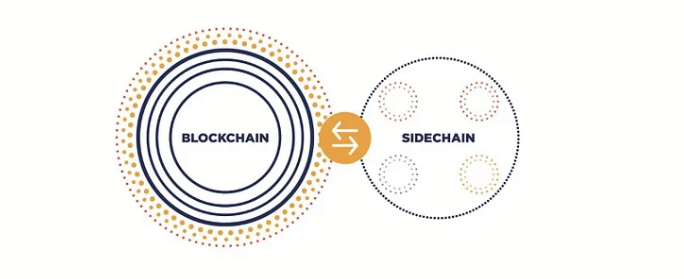
RSK
RSK is the first EVM-compatible sidechain on the Bitcoin network, a stateful smart contract platform guaranteed by Bitcoin miners. Miners are rewarded for co-mining, allowing them to actively participate in the smart contract revolution.RSK’s goal is to enable smart contracts, instant payments, and greater scalability to enhance value and utility for the Bitcoin ecosystem.A distinguishing feature of RSK Smart Contracts is that it uses Bitcoin’s mining mechanism to maintain its network and security. This means that the RSK smart contract blockchain has a higher degree of security and decentralisation than Ether, while avoiding some of the scalability and performance issues found in the Ether network.
RIF is a network based on RSK smart contracts, which provides a series of infrastructure services (DeFi, storage, domain name services, payment solutions) to solve the technical complexity, lack of user experience, insufficient security, and lack of a unified standard ecosystem and other problems faced by the second tier network.
Spiderchains
Spacechain is the latest proposal in Bitcoin sidechain design that merges mining and requires miners to run both Bitcoin nodes and the sidechain nodes they want to mine. The chain of transactions starts with a UTXO and two outputs are created for each transaction. The first output is the mnemonic UTXO, which indicates that the chain of transactions is associated with a particular Spacechain, while the second output is a small denomination UTXO, which can be spent by anyone, although additional inputs and outputs are required due to its small denomination. Starting with the second transaction of the chain, anyone can spend the second output from the Spacechain transaction chain and use it to commit their sidechain blockhead. Meanwhile, Spiderchain, which sits on top of the mainchain base layer, was created by Botanix Labs in September this year to port the ethereum virtual machine to a platform anchored to the Bitcoin network. Unique in that it does not directly address the role of miners in consensus, nor does it use any form of merge mining, Spiderchain uses multi-signatures and escrowed margins to create a second-layer proof-of-stake system on top of Bitcoin, and can be deployed without any changes to Bitcoin.
Softchains
Ruben Somsen proposed a sidechain mechanism in January 2021 called Softchain. The concept originated from Somsen’s earlier “PoW Proof of Fraud” proposal, which was originally intended to improve the security of Simple Payment Verification (SPV). In Softchain, the master node needs to download and verify the block header of each Softchain sidechain. When a chain split occurs, the master chain node must download the relevant blocks and verify them using the UTXO set of commitments, which forms the basis of the two-way anchoring mechanism.
Other agreements:
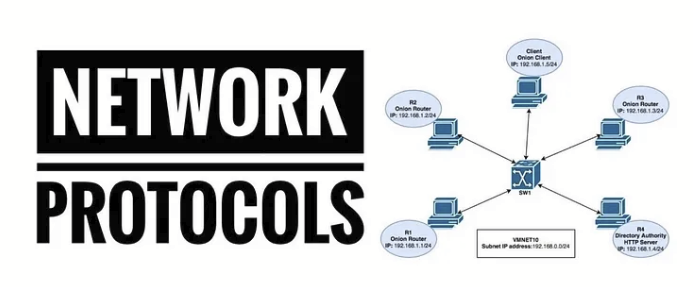
Omni (Stablecoin)
JR Willett proposed the Omni protocol in January 2012, which is a digital currency and communication protocol based on the Bitcoin blockchain, which uses the Bitcoin blockchain to implement smart contracts, user assets, and decentralised peer-to-peer exchanges, etc. In 2014, USDT was the first to be issued on the Bitcoin blockchain based on the Omni Layer protocol. Since then it has gained a first-mover advantage a game to capture half of the cryptocurrency stablecoin market, is based on the Bitcoin network Omni-USDT, the address for charging coins is a BTC address, and charging and withdrawing coins go on the BTC network;
Colored coins (asset issuance)
Chia is a more efficient and environmentally friendly cryptocurrency platform provided by Bram Cohen — also the founder of the BitTorrent protocol.Chia introduces a new consensus mechanism called Proof of Space and Time (PoST), which is an alternative to the traditional Proof of Work consensus mechanism ( This is an alternative to the traditional Proofof of Work (PoW) consensus mechanism. The concept of using Bitcoin for asset issuance has been around since 2012 with the recent market buzz of scripting protocols.
DLCs (Scalable Smart Contracts)
On 4 November, according to official news, DLC.Link announced the launch of dlcBTC, an innovative solution designed to securely enable Bitcoin for DeFi operations on Ether. Scheduled for release in February 2024, dIcBTC will reportedly empower Bitcoin holders to seamlessly participate in DeFi protocols like Curve and AAVE without the need for a custodian or third party.
Ethscriptions (Inscription Protocol for Creating Transferred Content for Ether)
The earliest Ethscriptions protocol was created in 2016, but Tom Lehman only developed a product for it on 17 June of this year.Ethscriptions is an inscription protocol for creating and transferring digital content on Ether using Transaction Call Data, which bypasses the use of smart contracts to store and execution to enable the application of deterministic protocol rules to EtherCall Data to compute state, enabling trust in each other to determine the outcome of a contract without informing the prognosticator and trusting a third party.
Multibit (Cross-Chain Bridge)
Designed to bridge the Bitcoin network and the Ethernet Virtual Machine (EVM) network via the Multibit Cross-Chain Bridge, currently used between the ETH, BNB, and BTC networks, its primary purpose is to provide DeFi services for BRC-20 assets.
Conclusion:
The year 2023 could be considered as a pioneering year for the bitcoin ecosystem. Although the ecosystem is struggling due to the fact that it is not naturally Turing-complete, the emergence of Inscription has not only shifted the market’s attention to the bitcoin ecosystem, but also attracted a lot of developers to join the ecosystem. Perhaps we are on the eve of an ecosystem explosion, just as the last round of public chain battles at the beginning of the 21st century saw a “blossoming” of the ecosystem.
The protocols that can stand out in the current situation are also worth looking forward to and exploring, and the circulation and transmission of digital gold is still unfinished.
From ybbcapital


